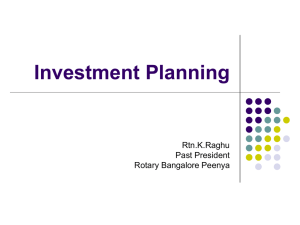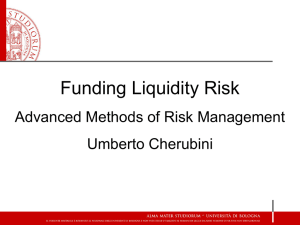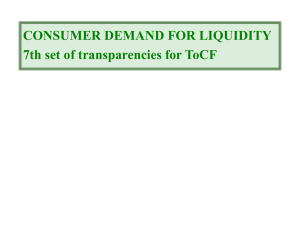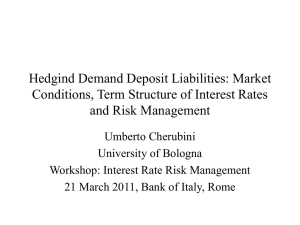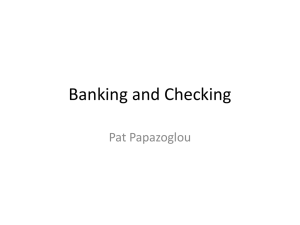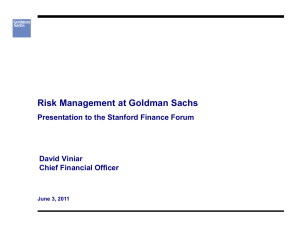Deposits
advertisement
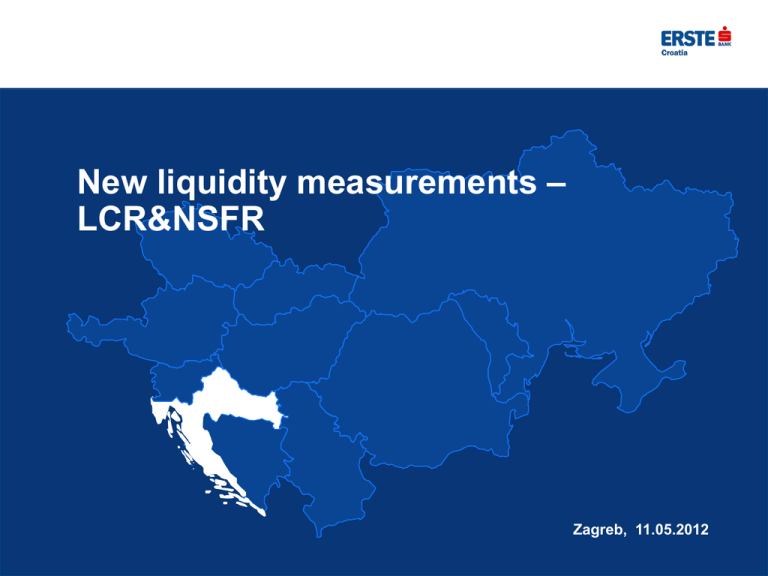
New liquidity measurements –
LCR&NSFR
Zagreb, 11.05.2012
Definition:
Liquidity- ability to meet obligations when
they come due without incurring
unacceptable losses
2
−Liquidity was major problem during this
crises for many credit institutions
−The result is that most banks now try to
forecast their liquidity requirements
−Banking regulators also view liquidity as a
major concern and that is why this two
measurements were developed
−Quantitative measures of liquidity are
being implemented, liquidity isn’t any
more only a gut feeling
3
LCR
Liquidity coverage ratio - designed to ensure that
financial institutions have the necessary assets on
hand to ride out short-term liquidity disruptions.
4
NSFR
Net stable funding ratio - requires a minimum
amount of funding that is expected to be stable over
a one year time horizon based on liquidity risk factors
assigned to assets and off-balance sheet liquidity
exposures.
5
Characteristics of both report
−assumptions set by regulators to model stress scenario
−differ base on product type and other characteristics
−assumptions for deposits also differ based on
counterparty (whether it is retail, corporate…) and
whether we have operational relationship with a client
6
Deposits:
−Whether client has relationship/operational relationship
with bank or not has big influence on run-off rate.
−Currently definition of relationship is left on credit
institutions to define and presence of relationship
should reflect stability of the deposit – gives us
opportunity to develop our own models.
7
Deposits:
Relationship → stable deposit; withdrawal of
these deposits should be highly unlikely
-most important issue in new LQ measurements
100%
90%
80%
70%
60%
50%
40%
30%
20%
10%
0%
Other liabilities
Retail depo
Corporate depo
Other depo
8
Deposits:
Retail-with operation
relationship
Retail deposits
Retail-no operation
relationship
Corp-with operation
relationship
Corp deposits
Corp-no operation
relationship
Deposits
Model done based on
historical data
Other deposits
9
Model:
Predictor variables (X) :
•
Existing loan
Respons variable (Y) :
•
Incomes
•
Trans. accounts
•
Monthly turnovers in last 12
months
•
Stability flag:
1-stable
0-less stable
Binary
.....
−Response variable has only two possible
outcomes so we will use logistic regression as a
model.
10
Model:
P 𝑦=1
𝑙𝑜𝑔
1−P 𝑦 =1
= 𝛼 + 𝛽𝑋
−log[P{y=1}/(1-P{y=1})] is called logistic
transformation or logit
−It transforms binary variable into continuous
one:
𝑙𝑜𝑔 P 𝑦 = 1 / 1 − P 𝑦 = 1
∈ −∞, +∞
−Note: response variable is no longer y but
P{y=1}
11
Model:
−Formula that expresses the probability of success
directly:
12
−Main concern is to make good model to
differential stable and less stable deposits
in retail. This model will have influence on
the entire bank (e.g. pricing of deposits,
liquidity ratios, interest rates for clients,
regulatory requirements…)
13
Modeling amount of deposits:
−One more very important issue is to
forecast volume of the deposits
14
Thanks for the attention!


